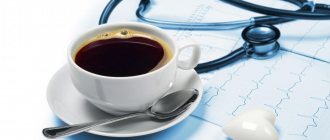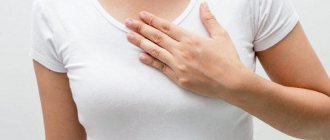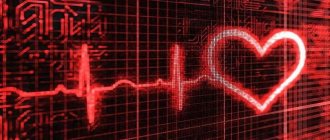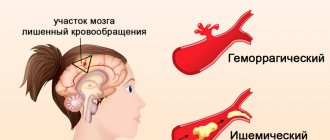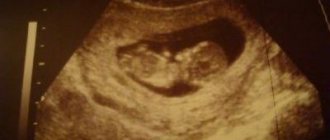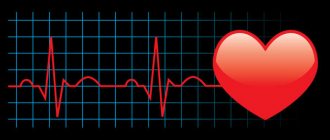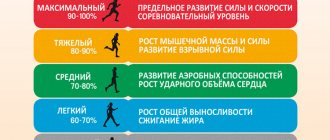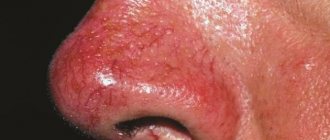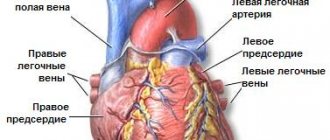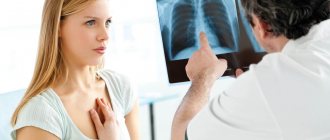Tremors in the body and palpitations occur in a person for a reason. In this case, there are many options, but one thing is clear - the body is already tired, both physically and mentally, and the nervous system is simply “at the limit.”
It happens that everything seems to be fine, but then a sharp trembling begins inside the body, rapid heartbeat, and poor health. And this is regardless of the weather, the temperature in the house, body temperature - everything happens suddenly.
This feeling of internal tremor is not so scary, and not so worrying, but this is the first “bell” of the body - something is wrong. During this state, you want to quickly take cover and warm up, but everything is useless, you are still freezing, and your pulse is about to jump out.
What is the reason for this condition?
Causes of palpitations and trembling
These manifestations are one of the common reasons why patients see a cardiologist, therapist, neurologist, or endocrinologist.
What could it be?
This condition is fueled by periodic loss of pulse, too fast heart rate, weakness, and goosebumps.
Factors influencing this manifestation are different and are not always related to the work of the heart muscle:
- Cardiac conduction disorder
- Secondary myocardial contractions,
- Development of arrhythmia,
- Heart disease,
- Heart attack, etc.
But there are also a large number of reasons not related to the functioning of the heart:
- Incorrect functioning of the gastrointestinal tract. And since the organs are directly related to the heart muscle, frequent pulsation is also closely related to this.
- When the vagus nerve appears, a certain disruption occurs in the functioning of digestion, which gives a signal of disturbances. It is precisely this symptom that can cause minor trembling. Patients may also feel a little nervous during a gastroscopy.
- Shaking in the body is often provoked by an incorrect approach to any of the therapies, when medication is taken uncontrollably.
- When a large amount of nicotine enters the body, frequent pulsation and trembling in the arms and legs occur.
- With the development of diseases associated with the endocrine system, these deviations from the normal functioning of the heart can also be observed. This is due to incomplete production of Thyroxin, TRIIODOTHYRONINE.
- Alcohol, like no other, can cause a person’s internal tremors.
- Rheochromocytoma is the name of an oncological process in the adrenal glands, the symptoms of which are a strong heartbeat.
- With constant abuse of drinks with large amounts of caffeine, internal shaking in the body and headaches appear.
- As for the female gender, this kind of symptoms can appear after the onset of menopause.
- During surges in body temperature: ARVI, bronchitis, inflammatory processes, tremors are also observed in the heart area, which is directly related to the feverish state of the patient.
When it comes to problems with the endocrine system, it should be noted that trembling occurs only in the morning, and towards lunch everything returns to normal.
Body tremors and rapid heartbeat
Pathologies of various body systems lead to disruptions in the nervous regulation of organ function. Trembling hands and palpitations occur either alone or in combination with other symptoms. Treatment is comprehensive, using medications, psychotherapy, physiotherapy, herbal remedies, and dietary nutrition.
Why does tremor and tachycardia appear?
The feeling of muscle tremors throughout the body in combination with arrhythmia accompanies both physiological and pathological processes. Normally, this condition appears during severe anxiety, threat, or emotional shock, as the body’s reaction to a stress factor.
Such unpleasant sensations that occur in a calm state indicate disturbances in the functioning of the nervous, endocrine, cardiovascular, and digestive systems. Internal tremors during VSD are caused by an imbalance in the regulation of processes in the body by parts of the autonomic nervous system.
The pathological condition is accompanied by the release of a large dose of stress hormones and adrenaline into the blood. The pulse accelerates, muscles tense, abdominal vessels constrict, and blood flow is redistributed in favor of vital organs.
A drop in temperature in the abdominal cavity provokes involuntary muscle contractions to produce heat. The feeling of trembling from the inside may have the following reasons:
- heart problems: impaired conduction and contractility;
- valve defects;
- heart attack;
With endocrine diseases, shaking and tachycardia are observed in the morning, and pathologies of the nervous system are accompanied by attack-like manifestations even at rest or sleep.
Associated symptoms
Concomitant weight loss may indicate the development of thyrotoxicosis.
Strong heartbeat and tremors can be accompanied by a variety of symptoms, depending on the cause of the pathology.
For example, thyrotoxicosis is also accompanied by weight loss, irritability, and with cardiac ailments, pain in the heart area, a feeling of freezing, and shortness of breath often appear. People's hands shake during withdrawal symptoms, and their legs shake during varicose veins.
VSD is manifested by irritability, anxiety, fear, and surges in blood pressure. You should immediately consult a doctor if the following symptoms are observed:
- severe pain in the chest;
- increased body temperature above 38.5°C;
- fainting;
- severe nausea;
- feeling of lack of air;
- pressure above 130/70 mm Hg. Art.;
- difficulty urinating.
Diagnostic tests
If arrhythmia often occurs and the whole body shakes in the absence of stress factors, you should consult a therapist.
The doctor will listen to the patient’s complaints and examine him, and then refer him to a more specialized specialist.
A consultation with a cardiologist, endocrinologist or neurologist is usually prescribed, based on the accompanying manifestations. To establish the cause of the pathology, you will need to undergo an examination:
To determine the cause of such symptoms, it is necessary to do an encephalography.
- blood test for general indicators, biochemistry, sugar, hormones;
- ECG;
- Ultrasound of the heart;
- Encephalography.
- REG - study of cerebral vessels;
- MRI of the brain;
- gastroscopy;
- daily monitoring using Holter.
What is the treatment?
To calm the patient, Persen may be prescribed.
After determining the exact cause of the pathology, therapy is aimed at eliminating the underlying disease, after which the trembling inside the body and rapid heartbeat stop.
In the complex treatment of pathology, medications, herbal remedies and physiotherapy methods, and diet are used. In the symptomatic treatment of the disorder, the following methods are used:
- Sedatives: Novo-Passit;
- "Persen";
- "Glycine".
- Melissa;
- water procedures;
Prevention of pathology
In order not to encounter such unpleasant sensations as muscle tremors and palpitations, it is necessary to take care of prevention.
First of all, this means maintaining a healthy lifestyle, timely treatment of diseases, an adequate response to stress, and giving up bad habits.
You should spend more time outdoors, pay attention to physical education, get enough sleep and eat well.
Source: https://VseDavlenie.ru/zabolevania/thk/drozh-v-tele-i-serdtsebienie.html
Pathologies causing symptoms
When a person shakes inside the body, this is primarily an indicator that there is a violation of thermoregulation. And this is the first sign of problems with the endocrine system (Graves disease, diffuse goiter), as well as various types of fever.
During an injection for diabetes mellitus, slight trembling of the body may also occur.
A strong heart rhythm may also indicate that there was severe blood loss, anaphylactic or painful shock, collapse, anemia, hypoxia.
How does nervousness and internal trembling manifest?
Each person can feel the manifestations of nervousness differently, so it makes no sense to list the numerous variations of this painful feeling. Increased nervousness is considered a symptom of a disorder of higher nervous activity. Yeast manifestations also have many different variations. More often it manifests itself in the form of internal trembling in the chest, “fluttering”, internal vibration, “buzzing” inside. Less commonly, these symptoms may appear more locally, for example, a person may feel a trembling in the hand or tremors in the leg. At the same time, it is not uncommon to observe muscle twitching in this area of the body.
Related complaints
First aid
At the first manifestations of severe trembling, rapid heartbeat, weakness, you should immediately stop any exercise and go out into the fresh air (if you are in a stuffy room).
If you are asked for help in this condition, then the first stage should be to put the person with his back on a flat surface (floor, table), and give as much opportunity as possible to breathe in fresh air: open the window, unbutton his shirt, take off his tie. If you observe a person’s face becoming paler, then you should raise your legs a little higher than your body, as these are the first signs of fainting or stroke.
If a person is shaking from heart disease, then first of all you need to give Valerian and Motherwort.
Diagnosis of causes
The therapist refers patients with the above symptoms to neurologists, cardiologists, and a general blood test. Examinations are prescribed:
- heart (ECG, ultrasound),
- vessels (REG)
- brain (echo-EG, EEG, MRI).
If an endocrine pathology is suspected, the patient undergoes tests for fasting blood glucose, thyroid hormones and TSH, glucocorticoids, insulin and insulin sensitivity, and a biochemical analysis for the blood lipid profile, especially if the person is elderly or obese. For possible heart pathologies, a Holter study is prescribed.
Reasons to visit a doctor soon
The help of specialists will be required immediately in the following cases:
- If this state of the body has returned to normal (pulse jumps, frequent trembling, dizziness) - the causes of ischemic heart disease, arrhythmia, WPW syndrome.
- Severe pain in the chest, constant fear of death.
- Frequent general trembling after injections for diabetes mellitus.
- At temperatures above 38.2 °C.
- Blood pressure is above 130/70 mm. rt. Art.
- Frequent muscle pain, shaking hands.
Remember! These symptoms require immediate medical attention!
Factors influencing the development of symptoms
Dizziness, tachycardia and weakness can occur individually or together, under the influence of various factors:
- Medicines have various side effects. A feeling of pressure on the eyes, dizziness and rapid heartbeat may be a consequence of taking drugs to treat thyroid dysfunction or antiarrhythmic and hypertensive drugs.
- Hormonal imbalances occur during pregnancy and menopause, due to diseases of the endocrine glands and during puberty. The patient feels weakness, drowsiness, nausea, pressure surges and high or low pulse rate. Symptoms disappear immediately after the normal balance of hormones is restored.
- Panic attacks are a consequence of mental disorders (depression, neuroses), medications and other pathological conditions (hormonal and hemodynamic imbalances). They are usually not life-threatening and do not require special treatment. It is enough to try not to get into stressful situations and, if possible, undergo a course of psychotherapy. During an attack, the patient experiences increased sweating and tremor (trembling) of the limbs, loss of strength and uncontrollable fear, dizziness and greatly accelerated pulsation.
- An unhealthy lifestyle contributes to the early development of cardiovascular diseases. Many people cannot do without cigarettes and alcohol, which is why shortness of breath, high blood pressure, chronic fatigue, rapid heartbeat and dizziness gradually appear.
- Coronary heart disease develops against the background of advanced atherosclerosis. The lumen of the coronary vessels narrows, which leads to a lack of nutrition. The patient experiences dizziness, weakness, tachycardia, vomiting, slight chills, shortness of breath, excessive sweating, darkening of the eyes. Symptoms worsen with physical activity. They can provoke an attack of angina or even a myocardial infarction. The main symptom will be acute and pressing pain in the chest, radiating to the arm, shoulder blades and jaw. As treatment, agents are used to improve vascular patency and reduce the load on the heart.
- Osteochondrosis is characterized by pathological changes in the cartilage discs, due to which the nerves and blood vessels exiting the spinal column are pinched. The disease manifests itself as pain, numbness of the limbs, dizziness, general weakness, nausea and tachycardia. Such extensive symptoms are characteristic of osteochondrosis of the cervical and thoracic spine. Medicines with anti-inflammatory and analgesic effects are used as treatment. They are combined with physical therapy. It may take several months for the condition to improve, depending on the extent of the damage.
- Arrhythmias, which include tachycardia, are signs of pathological processes, and not independent diseases. They can provoke disruptions in hemodynamics, accompanied by neurological and cardiac symptoms. The condition can be alleviated with the help of antiarrhythmic drugs.
- Heart failure is characterized by a decrease in myocardial contractility under the influence of various factors. The patient's blood circulation is impaired, which leads to chest pain, signs of a cold (cough, fever, sore throat) against the background of the development of congestive processes in the pulmonary vessels, dizziness, arrhythmia. Sometimes swelling of the lower extremities occurs, especially in the evening. In the morning they completely or partially disappear. The treatment regimen will be focused on eliminating the root cause, reducing the load on the heart and improving its nutrition.
Weakness, dizziness and rapid heartbeat have a common development mechanism. Due to certain irritating factors, tachycardia occurs. As the heart rate increases, hemodynamic disruptions occur, which impair the nutrition of the brain and other tissues. The severity of manifestations depends on individual tolerance, the condition of the blood vessels, the degree of maintaining the constancy of cerebral (brain) blood flow and the contractility of the heart.
What is the diagnosis?
At the first manifestation of the above symptoms, you should first contact a therapist, after which you will be referred to the required specialist. Since different symptoms require referral to different doctors:
- With neurosis, trembling in the body and rapid heartbeat are different from other diseases - neurologist,
- Chills with VSD are a completely different picture, you will be referred to a cardiologist,
- Problems with the thyroid gland (other symptoms, there may be discomfort at the site of goiter formation) - endocrinologist, etc.
The main stage in the diagnostic process is taking tests (urine, blood), after which secondary types of examination of the heart muscle and vascular system follow:
- Electrocardiography (ECG),
- Ultrasound examinations (ultrasound),
- rheoencephalography (REG),
A brain examination may also be prescribed:
- echoencephalography (EchoEG),
- Electroencephalography (EEG),
- magnetic resonance imaging (MRI).
When investigating the causes of problems with the endocrine system, you should take tests for blood sugar levels, the level of insulin in the blood, and hormonal levels.
If there is a suspicion of heart disease, a study in the form of a CMS, an ECG recording per day, is used.
With a normal level of iodized and adrenal derivatives, with normal insulin and no untimely intake of antibiotics into the body, it allows you to immediately remove problems with the thyroid gland from the list.
Treatment for vegetative-vascular dystonia
During the development of vegetative-vascular dystonia in a person, treatment can be significantly inexpensive and not complicated:
- tea, tinctures, herbal decoctions (chamomile, calendula, ginseng, lemongrass, lure, immortelle leaves, valerian, etc.). These types of herbs will help normalize the nervous system, and a person will be able to normalize sleep at night,
- sedatives to improve heart function, as well as to relieve severe chills,
- preventive conversations with psychologists, neurologists,
- getting rid of life stress, tension, anxiety, depression (you can take a vacation, take salt baths, inhale the pores of beneficial herbs).
Something to remember! Any of the above methods must be agreed upon with a cardiologist and therapist, and in case of progression, placement in hospital treatment is possible
.
Treatment for VSD
When treating vegetative-vascular dystonia, rest and the use of herbal tinctures (ginseng, Schisandra chinensis, zamanika, immortelle) are often sufficient. If the symptoms are more severe, it is necessary to treat tremors from the inside with the help of strong sedative medications in combination with a visit to a psychologist. The most important thing with VSD is to limit stressful situations and deal with your own anxieties and fears. If your whole body is shaking (or even if it’s just trembling in your hands) and your heart rate is elevated, you should not ignore such manifestations without due attention, since therapy in the first stages of the disease gives a higher chance of a speedy recovery. If treatment is refused, symptoms will progress.
Treatment for other diseases
If there are problems with the thyroid gland, thyroid hormone preparations (Triiodothyronine, Thyroxine) and medications with inorganic iodine (Iodotirox, Thyrotom) are prescribed. These drugs can compensate for the lack of thyroid hormones and are taken throughout life (hormone replacement therapy). To suppress the increased production of thyroid hormones, thyreostatics are used (drugs that disrupt the production of thyroid hormones). Among thyreostatics, Mercazolil and Propicil are often used. Taking these medications affects the activity of the thyroid gland, as a result of which hormone replacement therapy is required.
For diseases of the digestive system, the main point is the correct selection of diet followed by adherence to the diet throughout the entire therapeutic course. Heart diseases require competently selected medications by a doctor, depending on the age, habits, and physical fitness of the patient. Physical activity plays an important role in treatment. Light workouts, walks in the fresh air or a visit to the pool will help you get in shape faster.
Why do problems arise?
In medicine, tachycardia is a violation of the rhythm of the heart muscle and an increase in the frequency of its contractions in 60 seconds. The diagnosis is made when the pulse reading exceeds 90 beats per minute. The process causes responses in the body, one of which is tremor of the upper extremities. Tachycardia is a symptom of the following groups of abnormalities:
- Physiological. The disorder develops as a response to external stimuli. These include psycho-emotional stress, excessive activity, overeating, and elevated air temperature. Medications, alcohol, and caffeine-containing substances have an effect.
- Pathological. Tachycardia with hand tremor is caused by cardiovascular diseases, acute conditions, due to extensive blood loss.
Symptoms of tachycardia - weakness and dizziness
Dizziness and weakness are very common symptoms. Experts meet them in their practice every day. These are not individual pathologies, but signs of many disorders in the body, including the cardiovascular system. A characteristic feature of weakness and dizziness during tachycardia is the presence of episodes of presyncope that last from two to three seconds to several minutes.
The relationship between dizziness and weakness and tachycardia is indicated by signs of shortness of breath and angina. Unlike the orthostatic type of hypotension, which is characterized by similar symptoms, tachycardia develops not only at rest. Possible manifestations:
- pre-existing heart disease;
- general disorders of the body that cause rapid heartbeat (electrolyte imbalance, thyrotoxicosis);
- taking medications that disrupt heart rhythm (antidepressants, cardiac glycosides).
Weakness and dizziness are observed with different types of tachycardia:
- sinus;
- atrioventricular;
- atrial;
- ventricular
In addition, these symptoms often indicate a disturbance in the functioning of the atria (flutter, fibrillation) or premature excitation of the ventricles associated with disorders in the conduction system of the heart.
In addition to dizziness and severe weakness, tachycardia usually causes presyncope (pre-fainting) symptoms:
- feeling of “weightlessness” in the head;
- general loss of strength;
- visual disturbances (“spots”, darkening of the eyes, blurriness);
- noise in both ears at the same time, decreased hearing acuity.
- pressure surges;
- sweating;
- paleness of the skin;
- nausea;
- tremor;
- dyspnea.
Often, the combination of the main symptoms of tachycardia is a kind of signal from the body about the presence of certain “problems” (from a common cold to pathologies accompanied by nausea, fever, and more serious manifestations).
Frequent heartbeat and the main accompanying symptoms (dizziness, weakness) occur under the influence of various factors:
- constant overvoltage (at home and at work);
- chronic fatigue syndrome;
- psycho-emotional stress;
- alcohol intoxication;
- fluctuations in weather conditions;
- hereditary predisposition;
- somatic pathologies;
- obesity;
- abuse of tonic drinks (including alcohol and energy drinks);
- heart diseases;
- taking certain medications.
Tachycardia can become dangerous if it develops:
- various types of arrhythmias;
- tetany (calcium deficiency in the blood);
- increased activity of the thyroid gland.
Dizziness
A person of any age can feel dizzy under any circumstances. The norm is considered to be an uncomfortable condition caused by being on carousels or in transport (sickness). In this state, a person is identified by an unsteady gait. Dizziness is a subjective experience of the patient. It is usually defined as an illusion (hallucination) of movement. The greatest discomfort comes from frequent dizziness.
